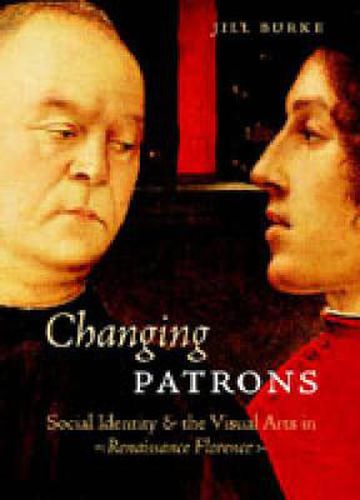Readings Newsletter
Become a Readings Member to make your shopping experience even easier.
Sign in or sign up for free!
You’re not far away from qualifying for FREE standard shipping within Australia
You’ve qualified for FREE standard shipping within Australia
The cart is loading…






To whom should we ascribe the great flowering of the arts in Renaissance Italy? Artists like Botticelli and Michelangelo? Or wealthy, discerning patrons like Cosimo de'Medici? In recent years, scholars have attributed great importance to the role played by patrons, arguing that some should even be regarded as artists in their own right. This approach receives sharp challenge in Jill Burke’s Changing Patrons. Burke, drawing heavily upon her discoveries in Florentine archives, traces the many profound transformations in patrons’ relations to the visual world of fifteenth-century Florence. Looking closely at two of the city’s upwardly mobile families, Burke demonstrates that they approached the visual arts from within a grid of social, political, and religious concerns. Art, for them, often served as a mediator of social difference and as a potent means of signifying status and identity. Changing Patrons combines visual analysis with techniques from history and anthropology to propose new interpretations of the art created by, among others, Botticelli, Filippino Lippi, and Raphael. Genuinely interdisciplinary, the book also casts light on broad issues of identity, power relations, and
$9.00 standard shipping within Australia
FREE standard shipping within Australia for orders over $100.00
Express & International shipping calculated at checkout
To whom should we ascribe the great flowering of the arts in Renaissance Italy? Artists like Botticelli and Michelangelo? Or wealthy, discerning patrons like Cosimo de'Medici? In recent years, scholars have attributed great importance to the role played by patrons, arguing that some should even be regarded as artists in their own right. This approach receives sharp challenge in Jill Burke’s Changing Patrons. Burke, drawing heavily upon her discoveries in Florentine archives, traces the many profound transformations in patrons’ relations to the visual world of fifteenth-century Florence. Looking closely at two of the city’s upwardly mobile families, Burke demonstrates that they approached the visual arts from within a grid of social, political, and religious concerns. Art, for them, often served as a mediator of social difference and as a potent means of signifying status and identity. Changing Patrons combines visual analysis with techniques from history and anthropology to propose new interpretations of the art created by, among others, Botticelli, Filippino Lippi, and Raphael. Genuinely interdisciplinary, the book also casts light on broad issues of identity, power relations, and